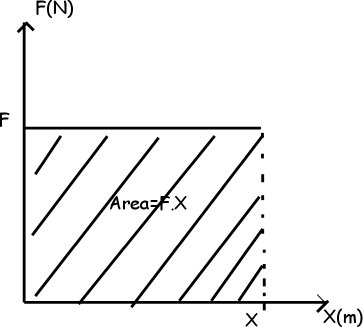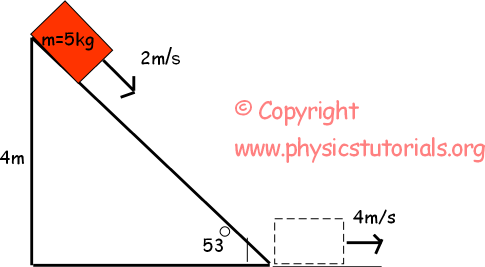Kinetic Energy
Objects have energy because of their motion; this energy is called kinetic energy. Kinetic energy of the objects having mass m and velocity v can be calculated with the formula given below;
Ek=1/2mv²
As you see from the formula, kinetic energy of the objects is only affected by the mass and velocity of the objects. The unit of the Ek is again from the formula kg.m²/s² or in general use joule.
Example: Find the kinetic energy of the ball having mass 0,5 kg and velocity 10m/s.
 Ek=1/2mv²
Ek=1/2mv²
Ek=1/2.0,5. (10)²
Ek=25joule
As in the case of Kinematics we can use graphs to show the relations of the concepts here. Look at the given graph of Force vs. Distance.
 Area under the force vs. distance graph gives us work
Area under the force vs. distance graph gives us work
Work=Force. Distance=Area=F.X (distance)
We can find energy of the objects from their Force vs. Distance graph.
Example: Find the Kinetic Energy of the object at 14m from the given graph below.
 We can find the total kinetic energy of the object after 14m from the graph; we use area under it to find energy.
We can find the total kinetic energy of the object after 14m from the graph; we use area under it to find energy.
 Example: Look at the given picture below. If the final velocity of the box is 4m/s find the work done by friction.
Example: Look at the given picture below. If the final velocity of the box is 4m/s find the work done by friction.
 At the top;
At the top;
Etotal=mgh+1/2mv²
Etotal=5kg.10m/s².4m+1/2.5kg. (2m/s) ²=210joule
At the bottom;
Etotal=1/2mv²=1/2.5kg.(4m/s)²
Etotal=40joule
The difference between the initial and final energy is used by the friction.
Work done by the friction=Efinal-Einitial=210joule-40joule=170joule